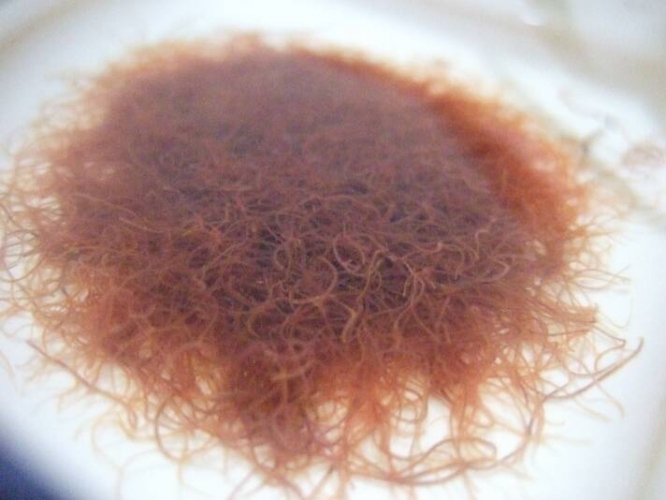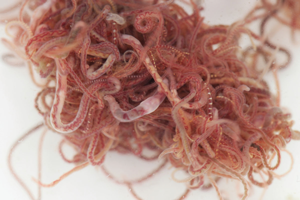
It can happen in exceptional cases that live Tubifex settle in the aquarium and then occur there, for example, as a permanent live food source for armored catfish. The stream tube worm belongs to the fewborsters and eats organic remains. They live in living tubes and only extend their rear end outside to take in oxygen. These worms live year-round in freshwater where they grow between 5-8 inches long. Tubifex contain hemoglobin, which gives them their red color.

However, worms usually contain a relatively high amount of fat, so they should not be on the aquarium inhabitants' menu on a daily basis. Even many snails do not say no to a juicy worm. Worms are a very good restorative food for fish and invertebrates such as shrimps, large-armed shrimps, crabs and shrimps. Beitrag teilen: Worms as live food in the aquarium for fish and co South East Wales Biodiversity Records Centre, 2018. Dr Mary Gillham Archive Project. South East Wales Biodiversity Records Centre, 2018. Rotherham Biological Records Centre - Non-sensitive Records from all taxonomic groups. Rotherham Biological Records Centre, 2017. Available from: Ocean Biogeographic Information System. Global map of species distribution using gridded data.

OBIS (Ocean Biodiversity Information System), 2023. NE Scotland other invertebrate records 1800-2010. North East Scotland Biological Records Centre, 2017. NBN (National Biodiversity Network) Atlas. Plymouth: Marine Biological Association of the United Kingdom. MBA (Marine Biological Association), 1957. The species directory of the marine fauna and flora of the British Isles and surrounding seas.

British and other marine and estuarine oligochaetes. Edinburgh: Oliver & Boyd.īrinkhurst, R.O., 1982. In Proceedings of the first international symposium on aquatic oligochaete biology, Sydney, British Colombia, Canada, May 1-4, 1979. The ecology of tubificids in the Thames Estuary with particular reference to Tubifex costatus (Claparède).


 0 kommentar(er)
0 kommentar(er)
